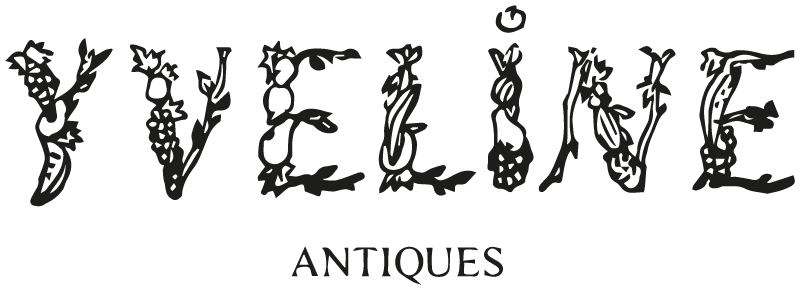While facing the Covid and this turning point in our History, Eijiro Ito made of his reflection on the face and the time, our time,
an art book, “Regarde moi”
The face…
A perpetual invitation to reflection, philosophical, literary, artistic, indecipherable enigma.
In Emmanuel Levinas, behind a face are all faces, is our humanity. This transcendence goes beyond form, annihilates it, to express the very essence of being. And in front of this singular but universal face is born the responsibility that I feel when I look at you.
The face: a gateway to the Other, and from this step towards you my consciousness is born, thank you.
“A face had to answer all the names in the world”, overwhelming poetry by Eluard. Can all the names in the world meet a face? Is it you I’m looking at or my reflection in your eyes? Endless quest.
How did I look at you? Have I reduced you to an object, denied your humanity to make you a consumable product?
This is one of the lines of thought for Eijiro Ito who “looks” at the immense loss induced by the absence of contact, social networks, our modernity so fast and mercantile, the door is closing.
Yes .. how did I look at you?
Eijiro’s work is centred around objects, mannequins, it is no longer bare skin that it is about but of wood, stone earth or papier-mâché, He attaches himself to the marks of the time, it relates this past time to the present and confronts us with ourselves, with our humanity, today.
How am I going to look at you?
” Regarde moi “
Eijiro photographed “faces” at Yveline’s, he made photoengraving of them, a new birth for the object, an illustration of what it already is: multiple, there are as many faces as there are looks on it. which is always the same …
The very process of elaboration, the slow and long artisanal work carried out is in itself a reflection, a reflection, under his fingers with each photoengraving another face was born, depending on the ink, the paper, the pressure. Neither quite the same nor quite different. In one face, all are contained or called to be. The photoengraving presented is a trace here and now, that of a face already so numerous of all the glances already received, and continuing on its way to those he calls. A constant call to contemplate in each one our own humanity.
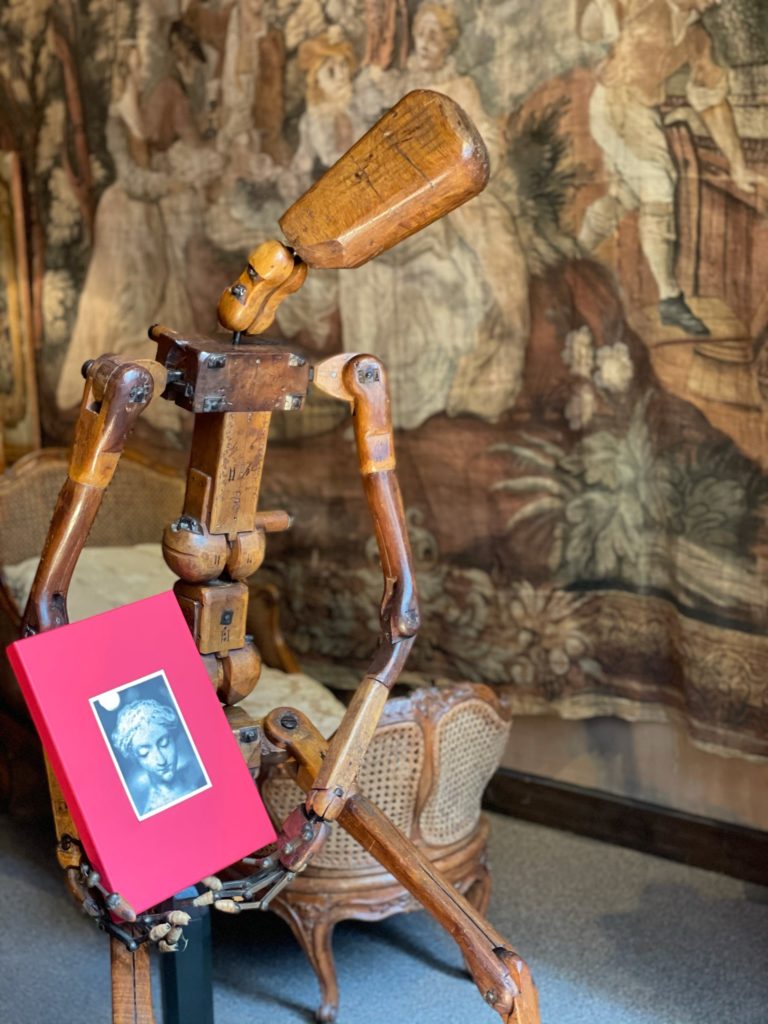
Eijiro Ito, Yveline et Agathe
“Regarde moi”
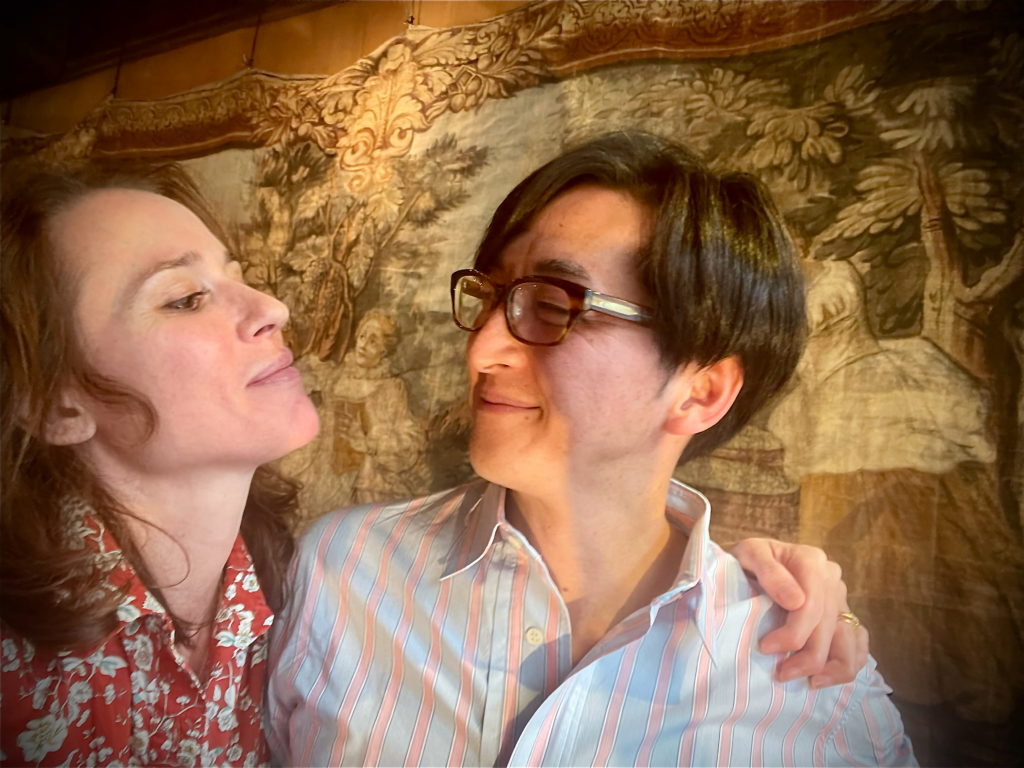
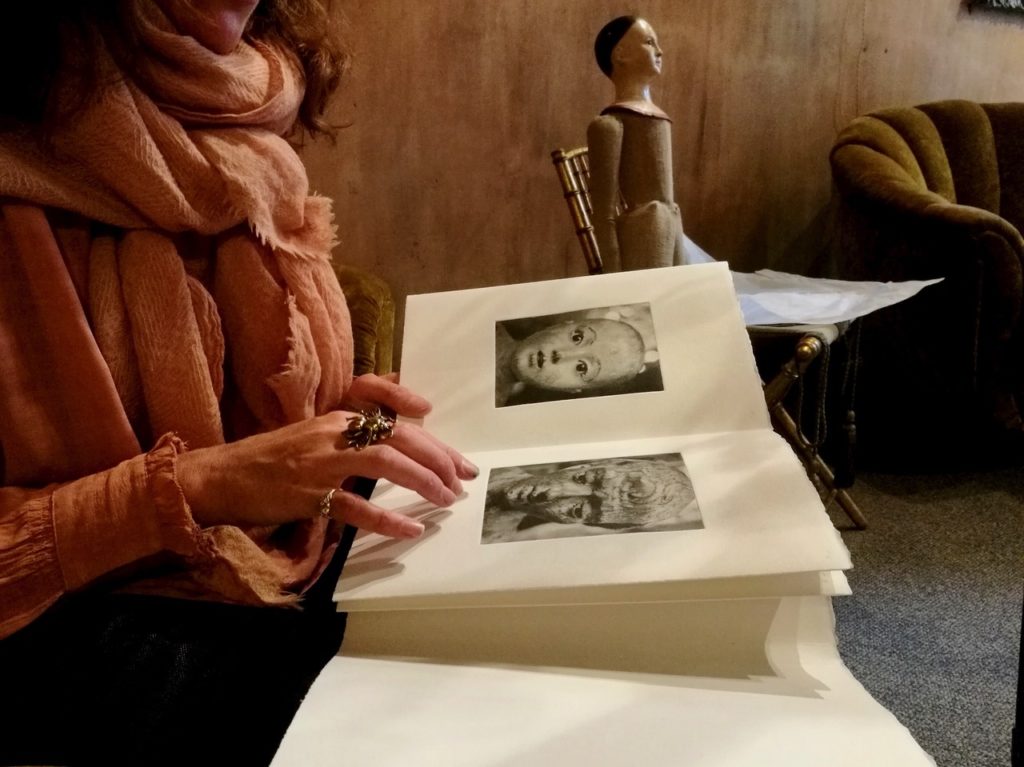
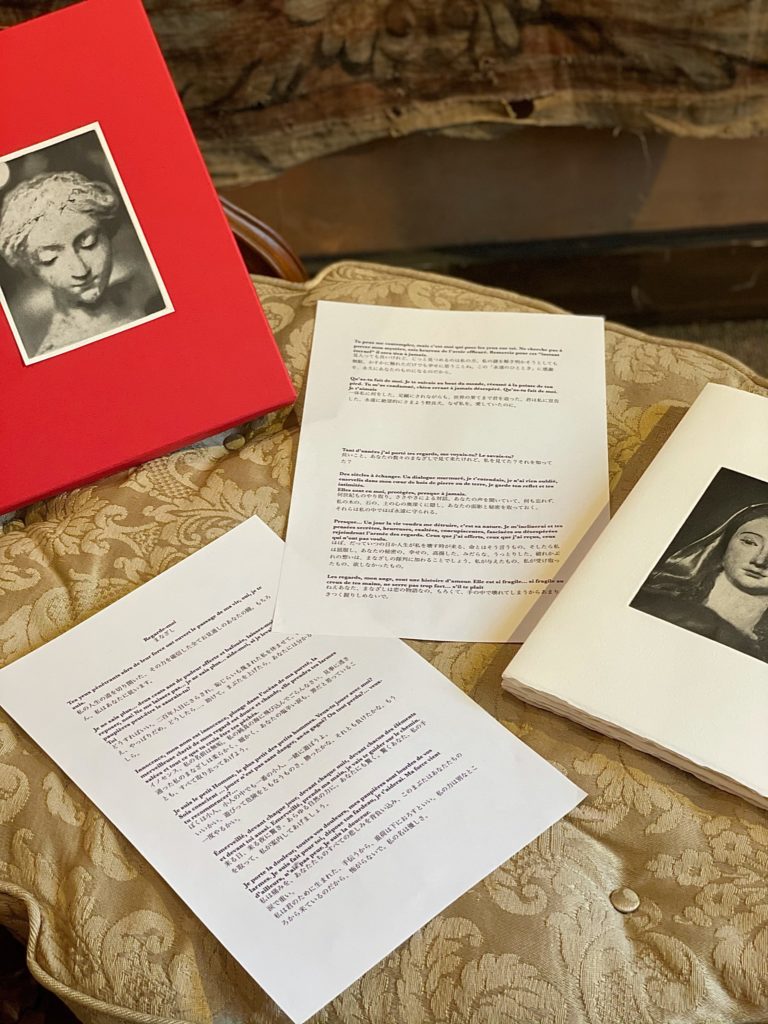
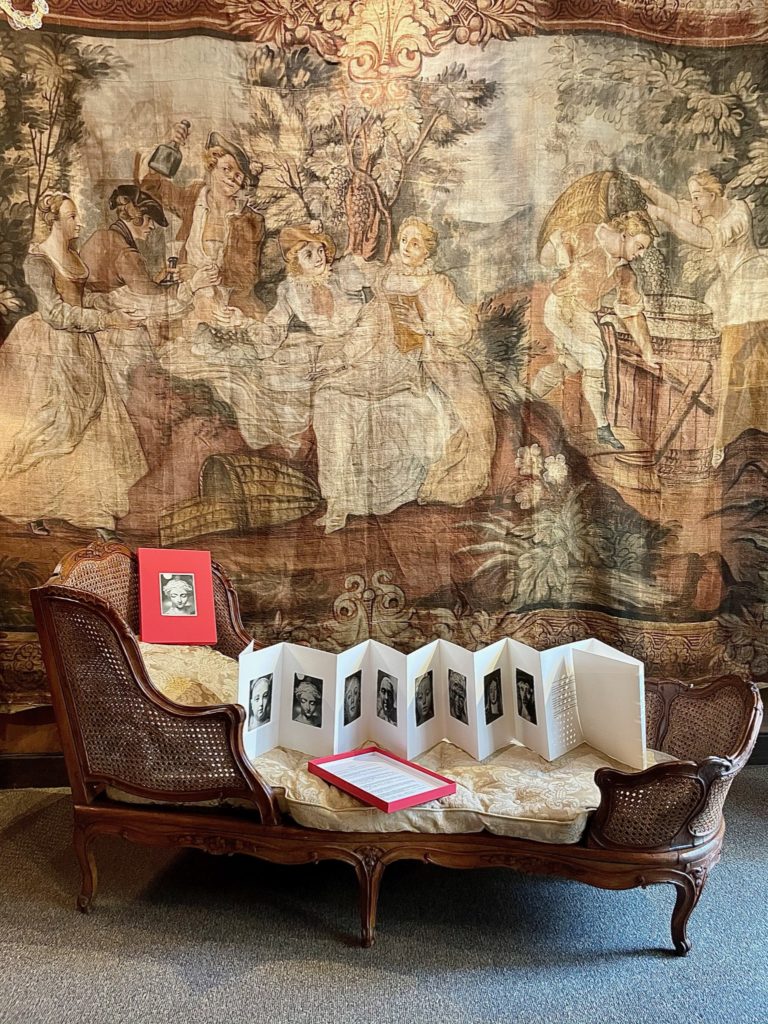
Making of
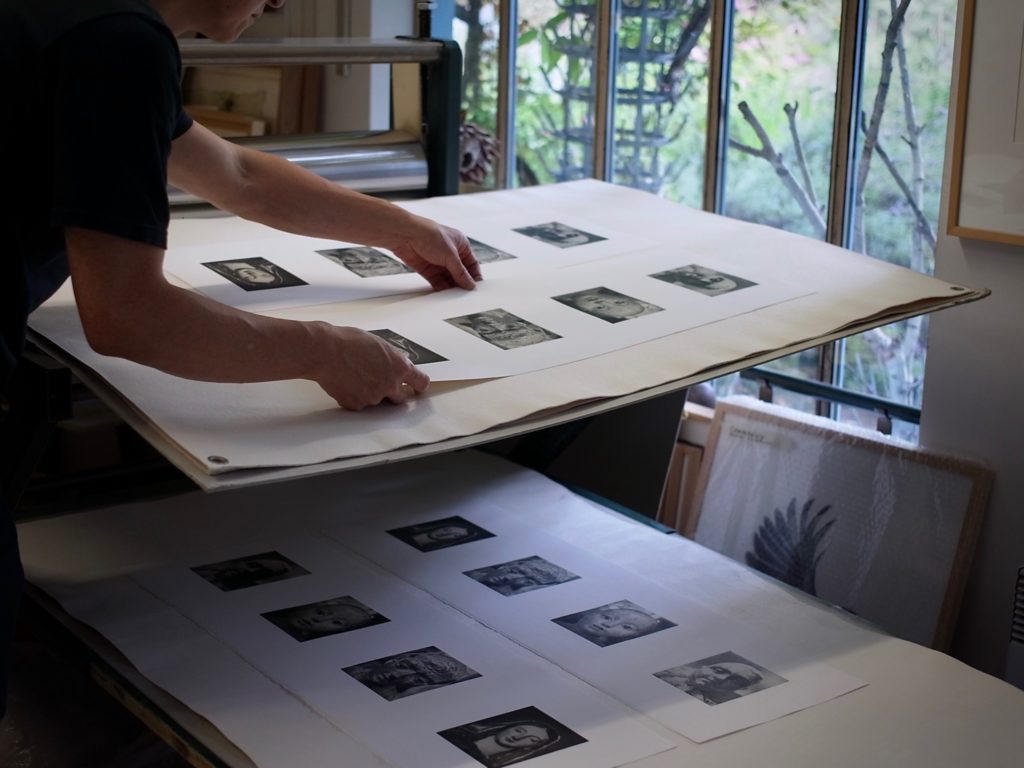
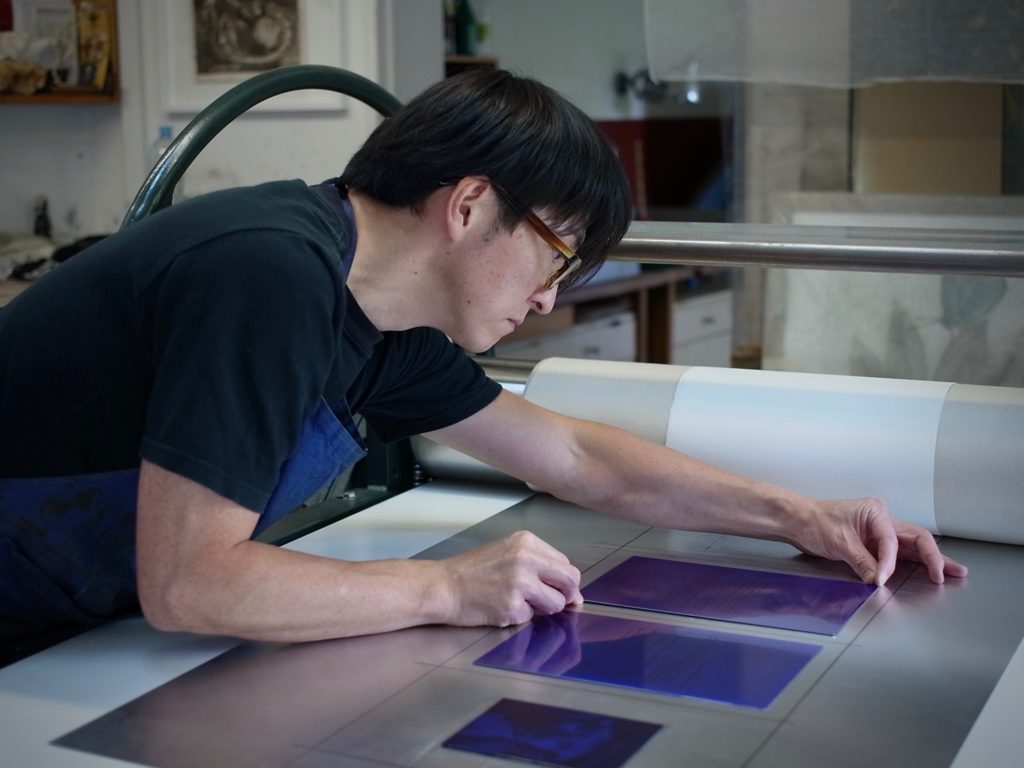
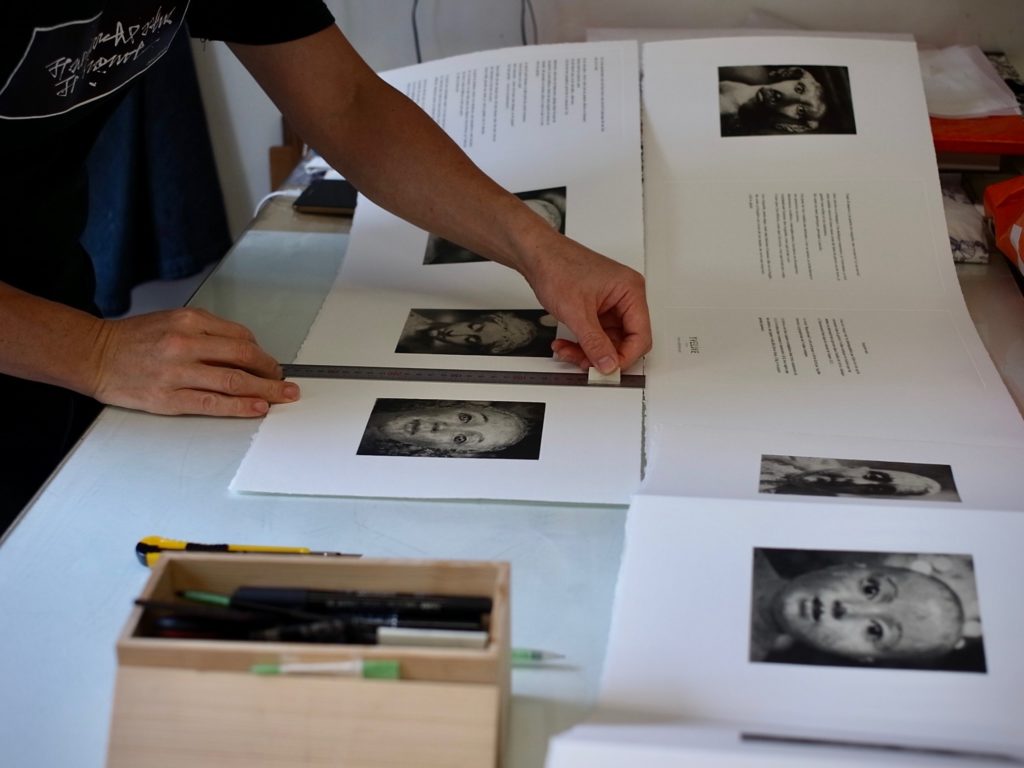
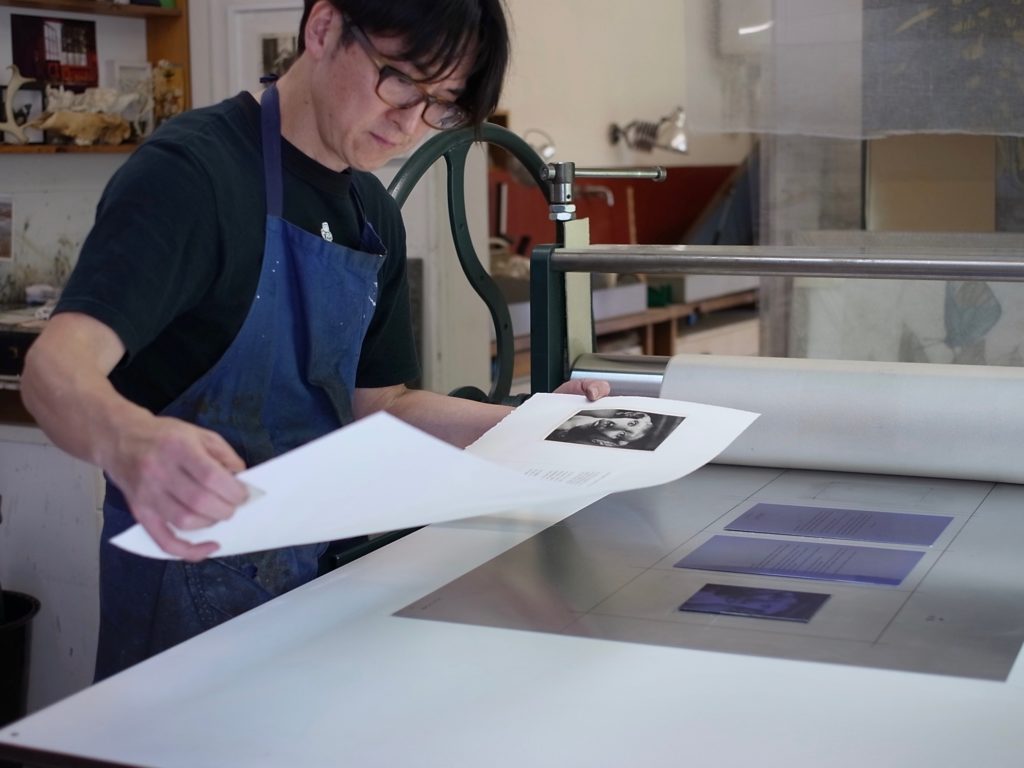
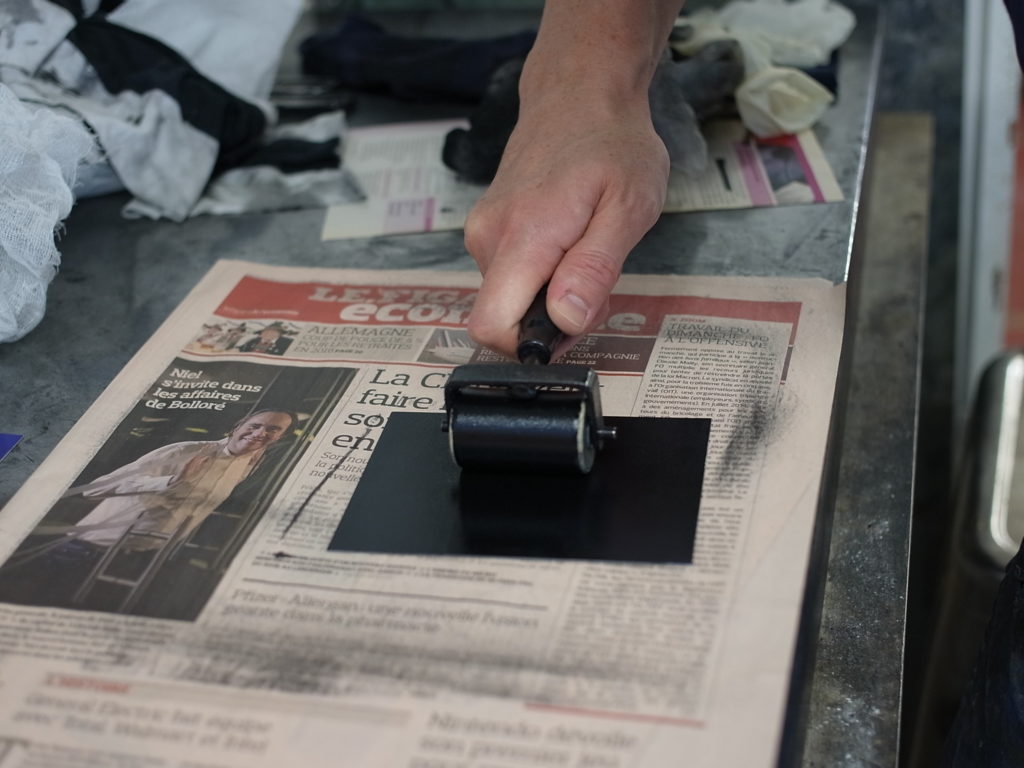
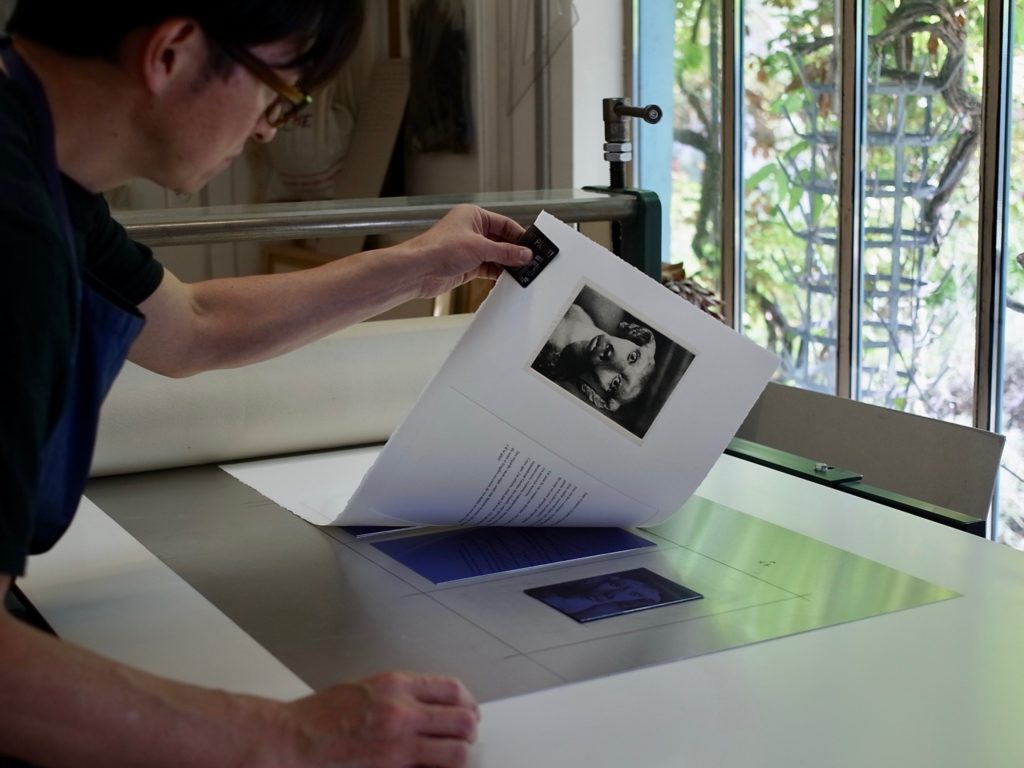
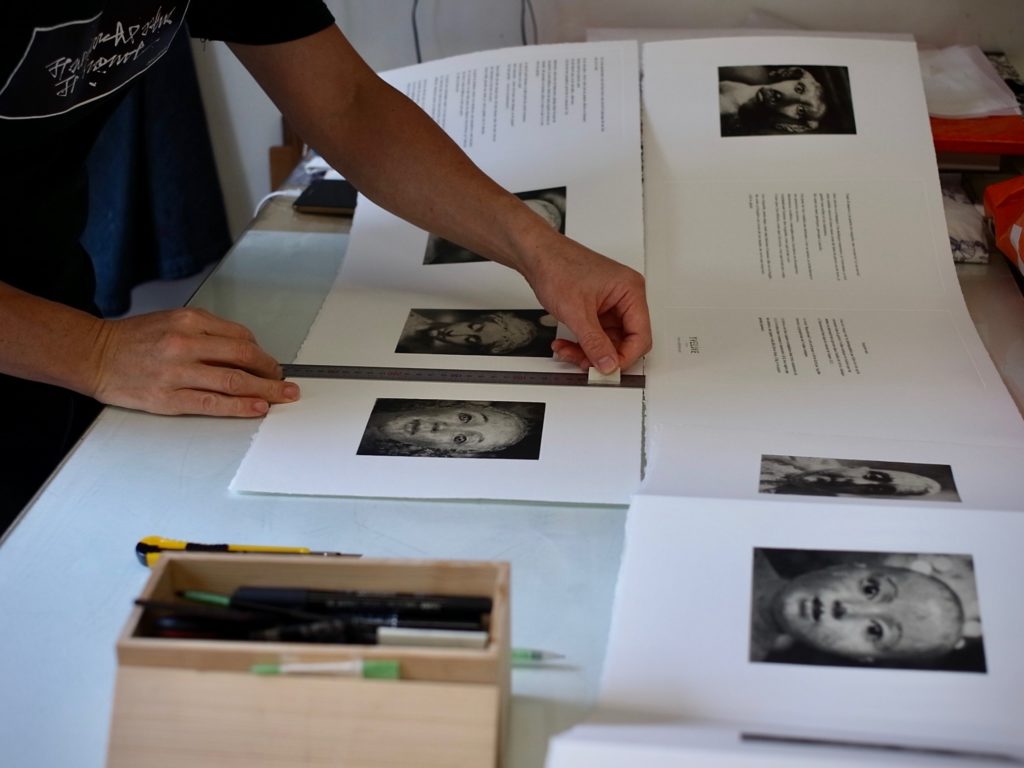
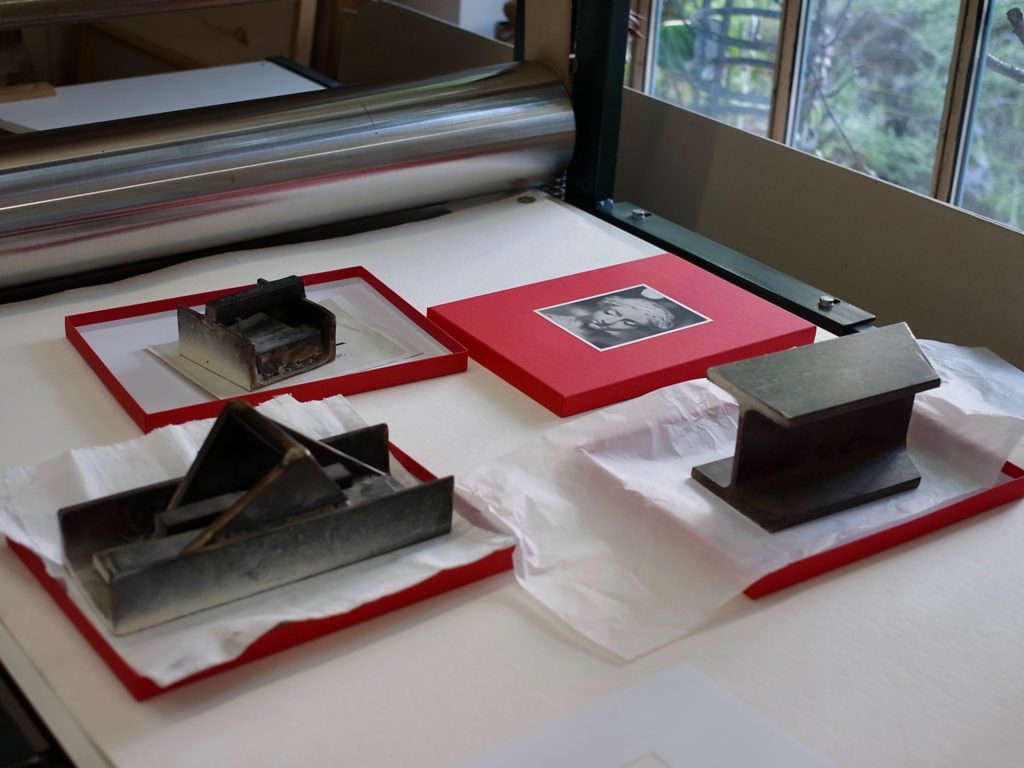
新型コロナウイルスと、この歴史的転機に直面し、伊藤 英二郎が顔と時間、ならびに現代への考察から生み出したアートブック『まなざし』。顔とは、哲学的、文学的、芸術的な探求へと永久に誘うもの、解読できぬ謎。エマニュエル・レヴィナスにおいては、ひとつの顔の背後にあらゆる顔が、私たちの人間性が存在する。この超越により形は消滅し、存在の本質が現れる。特異だが普遍的な顔を見る時に生まれる責任感。 顔とは、他者への入り口であり、相手への一歩から私の意識が生まれるとは、ありがたいこと。 エリュアールの感動的な詩「ひとつの顔が 世界のすべての呼び名にこたえなくてはならなかった」。果たして世界のすべての呼び名はひとつの顔にこたえられるのか。私が見ているのはあなた、それともあなたの目に映る私。探求に終わりはない。 私はあなたをどう見ていた?オブジェとして、人間性を否定して消耗品にしてしまった? それが伊藤の洞察の一つ。作家はソーシャルネットワークの発展に伴う触れ合いの欠如や、素早く移り変わりあまりにも商業主義的な現代により引き起こされる莫大な損失、心の閉ざされた社会に「まなざし」を向ける。そう、それで私はあなたをどう見ていた?
伊藤が扱ったのはオブジェやマネキン人形で、それはもはや素肌ではなく木、土、石、張り子でできたもの。時間の痕跡にこだわり、過ぎた時を現在に結びつけ、私たちを今日の私たち自身や人間性に直面させる。私はあなたをどう見るだろう。『まなざし』伊藤の用いた技法は、イヴリーヌの店の「顔」をカメラに収めて版画にしたフォトグラビュール。それにより新しいオブジェが生まれて、ひとつのオブジェがすでに持つ複数と言う性格をよく表している。同じひとつのオブジェには、向けられたまなざしの数だけ顔がある。 制作の過程そのもの、じっくりと長い時間をかけて行われる手仕事自体が考察、反映であり、版画家の指の下、写真製版を一枚刷るごとにインクや紙や圧力に応じて別の、まったく同じでもなく、まったく別でもない顔が生まれた。ひとつの顔の中に、あらゆる顔が含まれているか、そうあることが期待される。掲載されたフォトグラビュールは今ここにある痕跡、多くのまなざしを受け、すでにたくさんになりながら、各人に自身の人間性を熟考せよと絶え間なく呼びかけ、その者たちへと歩みを進めるひとつの顔の痕跡だ。
Eijiro’s work on Yveline since 5 years will also be shown in Kyoto in October in partnership with “Nuit Blanche”
You will find more information about this work on theses links:
https://nuitblanche.jp/fr/evenements/diaporama-fotozofio
https://nuitblanche.jp/fr/lieux/institut-francais-du-japon-kansai
